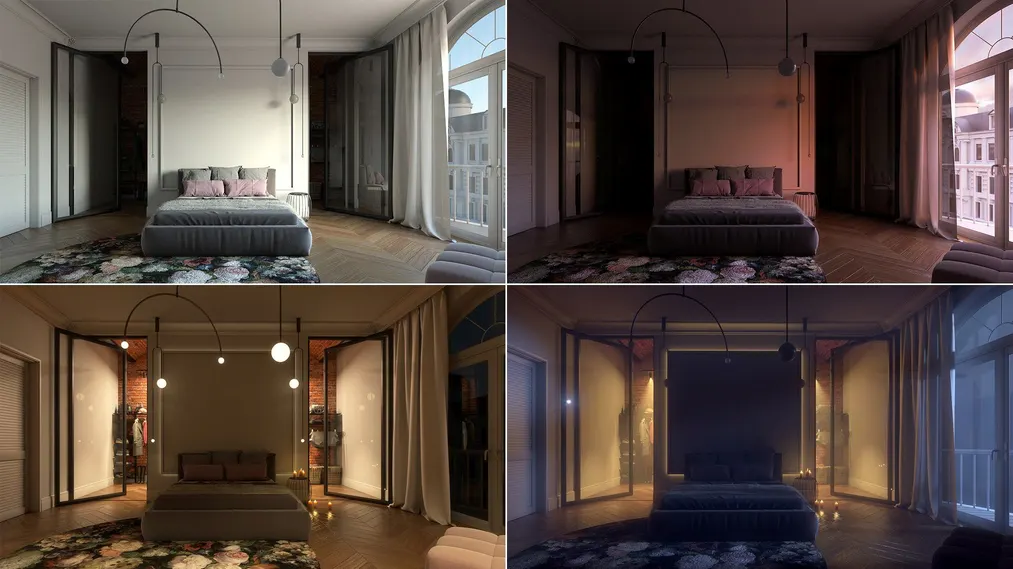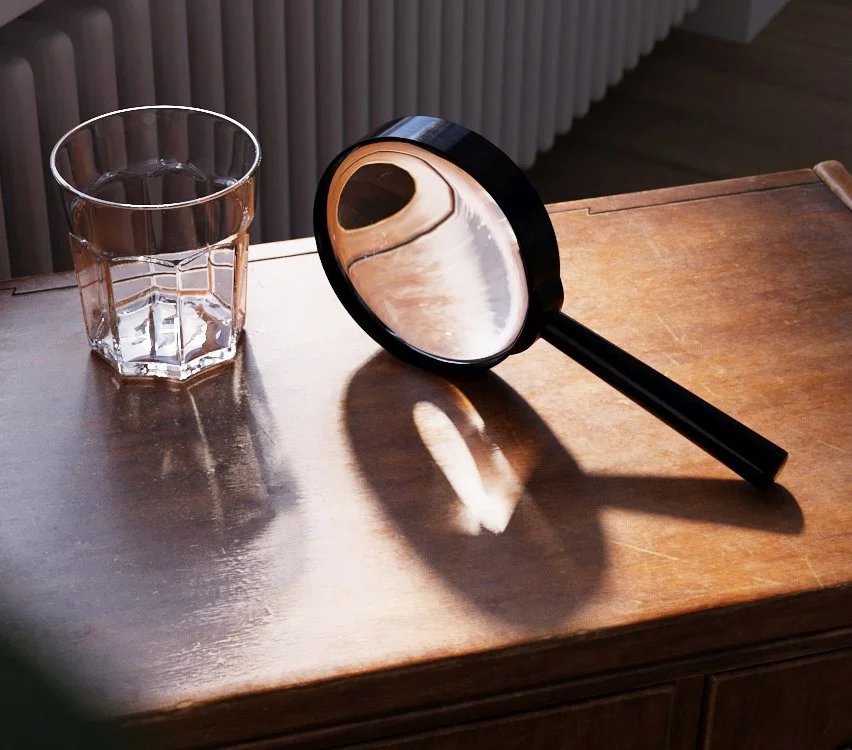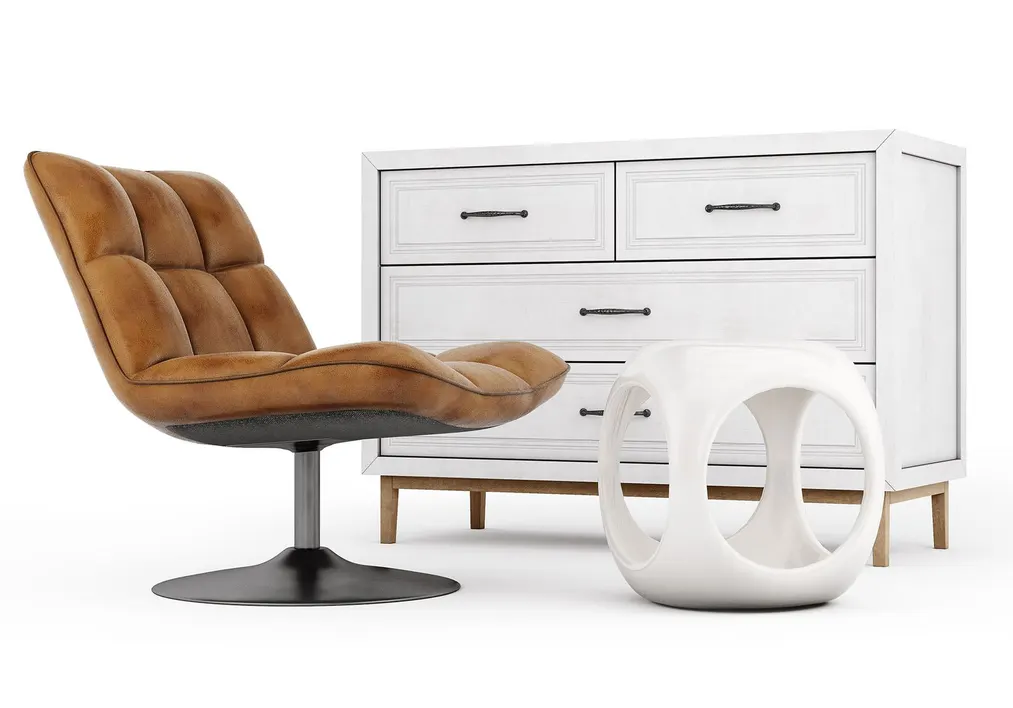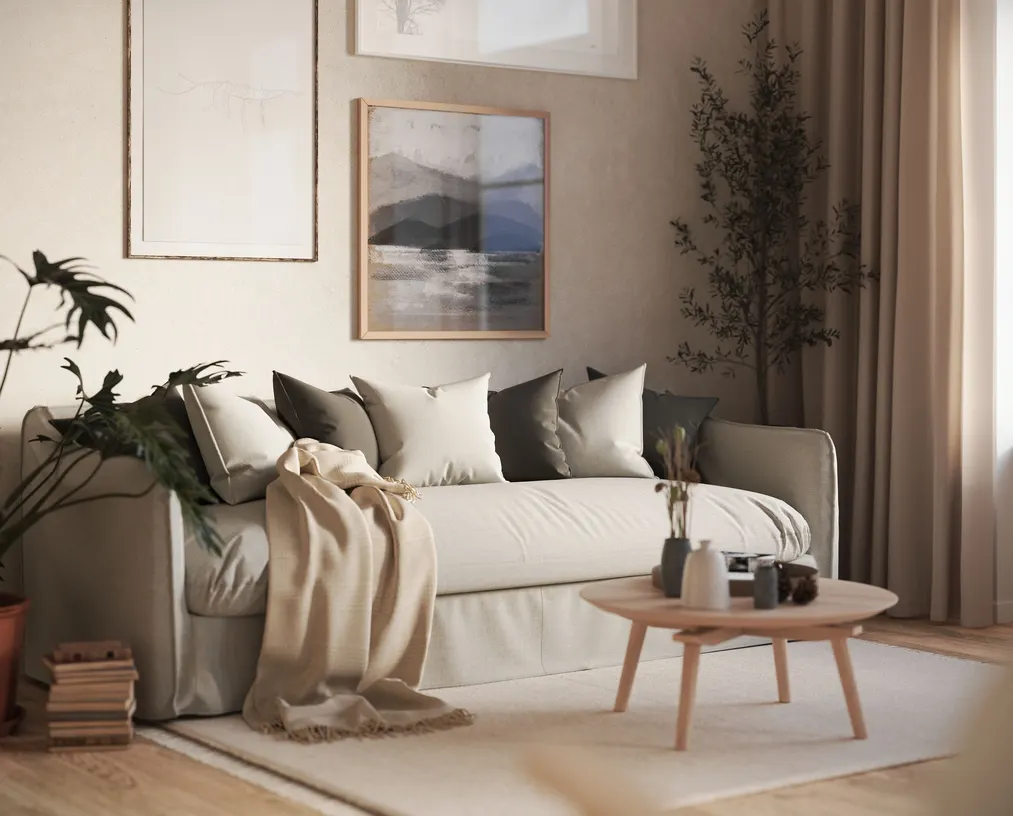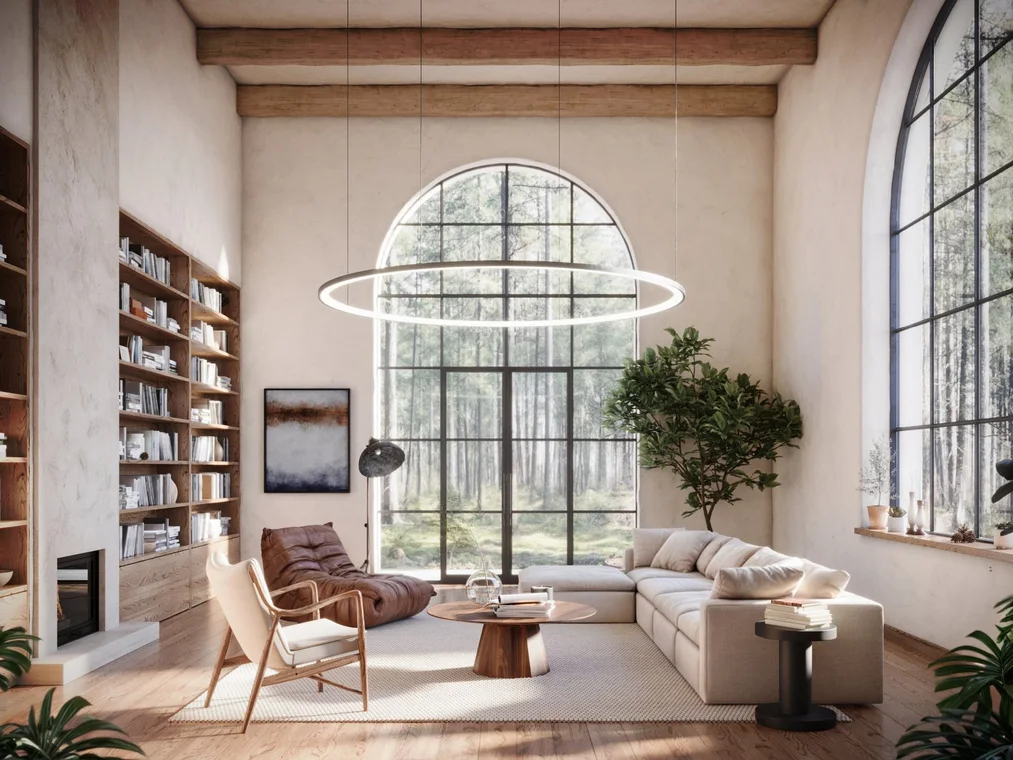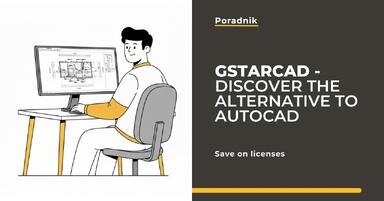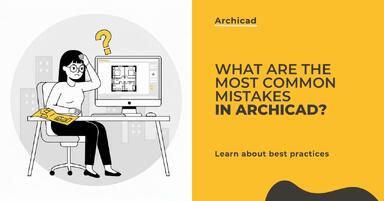Publication date: 07-02-2025 | Update date: 07-02-2025 | Author: Mateusz Ciećwierz
How to Create Photorealistic Interior Visualizations?
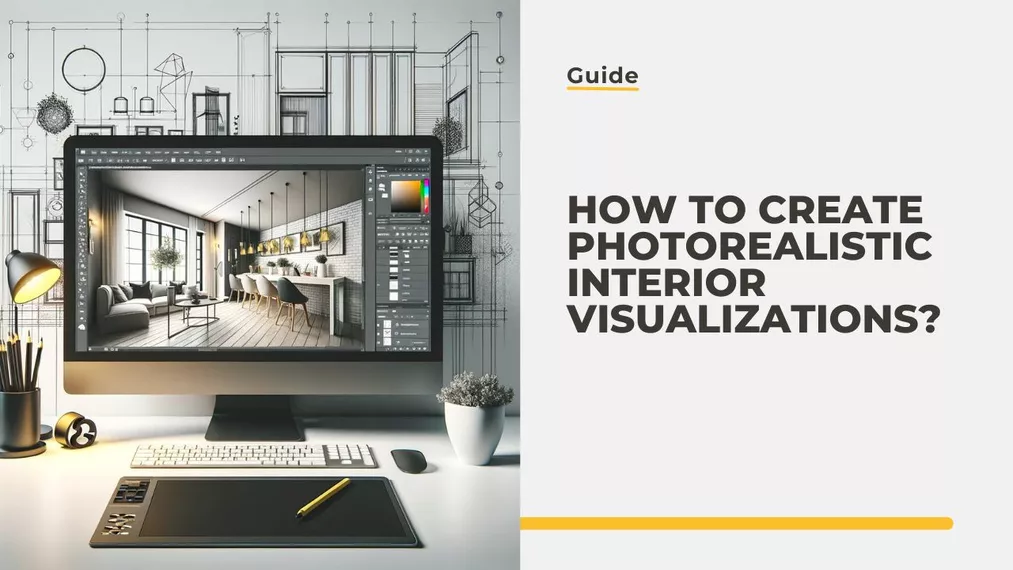
Understanding Light and Shadows in Visualization
The key to creating convincing, photorealistic visualizations lies in understanding how light and shadows work in space. Light has the ability to transform a scene, emphasizing textures, shapes and colors, as well as influencing the atmosphere and mood of the interior. Here are a few aspects to pay special attention to:
- Light Sources: Identifying and simulating light sources, both natural and artificial, is crucial. Natural light, such as that coming through windows, changes throughout the day and has a different character depending on the weather and time of year. Artificial light, such as lamps and spotlights, affects the way objects are illuminated and the shadows they cast.
- Reflections and Gloss: Different materials react to light differently. Mirror-like surfaces, such as glass or metal, will reflect light, while matte surfaces, such as wood or fabric, will absorb it. Understanding material properties is essential for realistic rendering.
- Shadows: Shadows are as important as the light sources themselves. They must be accurately rendered to account for the shape, density, and direction of light. Shadows help understand form and space, as well as add depth and realism to the scene.
- Global and Local Illumination: Global lighting illuminates the entire scene, creating soft shadows and smooth tonal transitions. Local light sources, such as lamps, create sharp shadows and pronounced contrasts. Balancing global and local light is crucial for creating a realistic atmosphere.
- Light Interaction with the Camera: The way the camera (or virtual camera in 3D software) interprets light has a significant impact on the final image. Parameters such as exposure, white balance, and depth of field must be carefully selected to faithfully reproduce lighting effects.
Significance of Light in Visual Narrative
Lighting not only influences the appearance of a scene, but also the emotional perception of the interior. By manipulating light and shadow, a designer can direct the viewer's attention, create focal points, and even influence the mood and atmosphere of the space.
CHECK COURSE - SKETCHUP - INTERIOR VISUALIZATION FROM SCRATCH
Utilizing High-Quality Textures
Textures are an integral part of creating realistic interior visualizations, as they have a tremendous impact on how materials are perceived in space. Here are a few key aspects to consider when utilizing textures:
- Faithfulness to Real Materials: High-quality textures should faithfully reflect the actual properties of materials. This means accurately replicating patterns, colors, and textures, such as wood grain, fabric weave, or metal sheen.
- Texture Resolution: High-resolution textures are crucial to avoid blurring or pixelation, especially with close-ups. The higher the texture resolution, the more detailed and realistic its appearance, which is necessary for achieving photorealism. It's best to avoid textures with a resolution lower than about 1024x1024 px.
- Texture Mapping: Precise texture mapping on 3D models is essential for achieving a realistic look. This includes proper scaling, rotation, and fitting of textures to the shape of objects, preventing unnatural distortions and repetitions. If you want to learn 3D mapping techniques in 3ds Max, check out our course - 3ds Max - Texturing Basics - Unwrap UVW
- Flaws and Detail: It's important to include texture variety in the scene. Different materials should have unique textures, adding depth and realism to the entire composition. Details such as fine irregularities, scratches, or usage traces can significantly enhance realism.
- Reflection and Gloss: Textures not only reflect color and pattern, but also the optical properties of the material, such as gloss or matte. Using specular and bump maps can significantly affect how materials interact with light.
- Texture Optimization: When using high-quality textures, optimization is also crucial to avoid overloading the computer system, especially for large projects with many textures. It is necessary to find a balance between quality and efficiency.
Using high-quality textures in photorealistic interior visualizations requires not only technical skills but also artistic sensibility.
CHECK COURSE - SKETCHUP - V-RAY MATERIAL CREATION
Precise 3D Modeling
Despite the wide availability of 3D models, there are situations where a specific model needs to be created from scratch. In such cases, precision in 3D modeling is one of the most important aspects of creating photorealistic interior visualizations. This process requires not only technical skill but also artistic sense and attention to detail. Here are key elements to consider:
- Scale and Proportions: Maintaining correct scales and proportions is fundamental to every 3D model. All interior elements, from furniture to accessories, must be proportional to each other and to the entire space they occupy. Scale errors can destroy the realism of the entire scene.
- Geometry Complexity: The complexity of 3D models should correspond to their function and visibility in the scene. More intricate models are needed for foreground elements, where every detail is visible, while simplified models can be used for background elements.
- Model Optimization: Effective modeling also requires attention to optimization. Too many polygons in a model can significantly slow down the rendering process, so it's important to find a balance between detail and efficiency.
- Functional Realism: Models should also reflect functional realism. For example, doors should have realistic hinges and handles, and furniture should reflect how it is constructed and used in reality.
Optimization and Practical Aspects
In addition to artistic and technical skills, optimizing the process of creating visualizations is crucial for every designer's efficiency. Here are a few practical aspects that help achieve high-quality renders while maintaining work efficiency:
- Managing Computer Resources: Photorealistic rendering often requires significant computer resources. Effective resource management, such as RAM memory and CPU power, is crucial. This includes using less complex models in the background or optimizing textures to reduce computer load.
- Scene Optimization: Scene optimization involves removing unnecessary elements that are not visible in the final frame, which can significantly speed up rendering time. It's also worth considering simplifying some models or textures that do not require a high level of detail.
- Using Proxy and Instancing Techniques: Proxy and instancing techniques (object duplication) allow for efficient management of complex scenes. For example, for repetitive elements such as vegetation or furniture, instancing can reduce system load while maintaining high detail levels. Check our guide - 10 Tips for Speeding up 3ds Max
- Working with Render Elements: Rendering elements separately allows for greater control over individual scene components in post-production. It allows separate rendering of lighting, shadows, reflections, etc., offering greater correction possibilities without the need for re-rendering the entire scene. We encourage you to check out our article - What Are Render Elements and How to Use Them?
- Optimization for Different Media: Render adjustment for the medium in which the visualization will be presented is necessary. For example, a render for print will require different optimization than one intended for online presentation.
Post-Production and Final Touches
Post-production is a crucial stage in the process of creating photorealistic visualizations, allowing for refining and improving finished renders. This stage allows for adding final touches that can significantly impact the quality and realism of the final visualization.
- Color and Lighting Corrections: The first step in post-production often involves color and lighting corrections. This may include adjusting saturation, brightness, contrast, and white balance. The goal is to achieve an image that faithfully reflects the real colors and light in the project.
- Visual Effects: Various visual effects can be added in post-production, increasing the realism and depth of the image. Popular effects include depth of field, imitation of camera noise, or lens flares.
- Retouching and Detail Correction: Post-production also allows for retouching small imperfections or adding small details that may be overlooked during the modeling and rendering process. At this stage, textures can be refined, shadows can be improved, or additional elements can be added to the scene.
- Optimization for Different Media: Depending on where the visualization will be presented (on a website, in print, in a presentation), it may require optimization for format and size.
Conclusion
Creating photorealistic interior visualizations requires a combination of technical skills and artistic sensibility. At cgwisdom.pl, we offer courses that cover all these aspects, from basic 3D modeling and texturing to advanced rendering and post-production techniques. Our goal is to provide designers and interior architects with the necessary tools to create convincing and realistic visualizations that speak to their clients.
Join us at cgwisdom.pl and enhance your skills in creating photorealistic interior visualizations to make your projects go beyond imagination.
GET ACCESS TO OVER 1000 HOURS OF COURSES FROM 129 PLN / MONTH
Read on our blog
-
![How to use Nano Banana Pro and how much does it cost? A practical guide for beginners]()
How to use Nano Banana Pro and how much does it cost? A practical guide for beginners
Learn how to use Nano Banana Pro for free via Gemini, when it’s worth paying, and which solution will be best for you! -
![Artificial intelligence - AI - for furniture manufacturers - see what possibilities it offers!]()
Artificial intelligence - AI - for furniture manufacturers - see what possibilities it offers!
Discover the AI tools and workflows that enable creating packshots, material variants, and interior arrangements: in practice, step by step. -
![Alternative to AutoCAD - Discover GstarCAD with a Perpetual License]()
Alternative to AutoCAD - Discover GstarCAD with a Perpetual License
Looking for a cheaper alternative to AutoCAD? GstarCAD is a professional CAD tool that costs up to 5 times less. See what it offers! -
![What are the most common mistakes made in Archicad by beginners?]()
What are the most common mistakes made in Archicad by beginners?
Are you starting with Archicad? Find out which mistakes beginners most often make and how to avoid them to work more efficiently!
